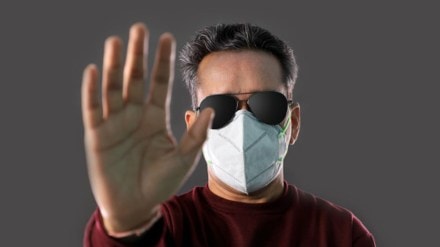The winter spike in Delhi’s air quality index has pushed residents to look for ways to minimise its detrimental effects, the newest in the list being wearable air purifiers. Anvitii Rai explains the science behind these devices, if they are effective & how making smarter changes in daily life might be the better option for now
Air purifiers: The scientific principle
There are several kinds of air purifiers available in the market. Filter-based air purifiers suck air in through fans, pass it through a series of filters (usually high-efficiency particulate air, or HEPA), and release clean air. HEPA filters are pleated and considerably thick, enabling them to catch particles of various sizes, including very fine particles around 0.3 microns — the most difficult size to filter. Studies have proven that they are effective in removing around 99% of PM0.3 air particles, making them suitable for Delhi-NCR’s PM2.5 air.
Purifiers that generate ozone particles also exist, and work when ozone particles attach themselves to pollutant particles, destroying them in a process called oxidation; however, as ozone itself harms lungs, the California Air Resources Board banned these in the state in 2010. Another type of purifier is the ioniser, which is inexpensive to produce, and releases negative ions that attach to airborne pollutant particles. This gives the particles an electrical charge, making them settle on surfaces like ceilings or floors.
Wearable air purifiers: Claim vs reality
Wearable air purifiers, priced Rs 2,000 onwards, are newer in the market and are largely ionisers. They are available in several forms, the most prevalent being wristbands and those worn around the neck. By releasing negative ions that attach to airborne particles, they claim to create a “bubble” of cleaner air around the mouth and nose of the user.
However, it is to be noted that ionisation does not actually remove particles from the air; it simply causes them to settle on nearby surfaces, and experts cite that even this effect is inconsistent in real-world conditions as they perform better in enclosed or low-ventilation indoor conditions. Moreover, as these devices have no fan or filter, they do not generate sufficient airflow to meaningfully clean the air in the breathing zone. Due to their small size, they also release very few ions, making any protective effect negligible, especially outdoors.
Wearables vs N95 masks
Wearable purifiers are relatively new gadgets that have gained popularity as lifestyle accessories—but they are not scientifically certified for protection, and experts have dismissed their real-world efficacy for reasons discussed earlier. This naturally brings attention back to established protective methods against PM2.5, most notably masks such as N95 or FFP2 respirators. These masks create a tight seal around the face and contain high-efficiency filters that trap particulate matter. Importantly, N95 respirators are regulated and certified by the US Centers for Disease Control and Prevention’s National Institute for Occupational Safety and Health.
It is also crucial to note that existing studies on wearable air-purifying devices have been performed only under controlled laboratory conditions. For instance, an IIT-Kanpur evaluation reported that one such device reduced particulate matter concentrations by up to 90% within 30 minutes—but this was measured inside a tightly enclosed 35-cubic-foot test chamber, not in real-world environments.
What experts say
Pulmonologist argue against relying on wearable air purifiers. Gurmeet Singh Chabbra, director – Pulmonology at Yatharth Super Speciality Hospital, notes that while these devices have gained traction, they “cannot match the filtration capacity and efficiency of certified masks or HEPA or ULPA (ultra-low particulate air) room air purifiers.”
This is echoed by Sandeep Sharma, pulmonology specialist at Fortis Escorts, who adds, “To beat pollution in the real sense, people need to trust science-backed information and not the marketing hype created by these gadgets.”
Regulatory bodies abroad make similar observations. The US Environmental Protection Agency (EPA) warns that ionisers can generate ozone as a by-product, and notes that “although some have suggested that these devices provide a benefit by rectifying a hypothesized ion imbalance, no controlled studies have confirmed this effect.”
Ways to deal with PM2.5 air
As of now, the Graded Response Action Plan (GRAP)-III is in effect in Delhi-NCR, under which stringent curbs are enforced on large-scale emission-generating sources such as non-essential construction and BS-III and BS-IV diesel vehicles. While it does not include any pointers for the public, a health advisory by the Union health ministry issued earlier this month urged that high-risk groups—pregnant women, young children, and the elderly—minimise outdoor activities as much as possible.
Dr Abdul Raouf Wani, a pulmonology specialist with Fortis Hospital, says, “Until stronger evidence emerges, well-fitted N95 masks and true HEPA filters at home—both proven to reduce PM2.5 exposure—remain one of the reliable ways to protect yourself from polluted air.” Meanwhile, if you have to buy a wearable purifier, ensure that it carries a Bureau of Indian Standards certification.
